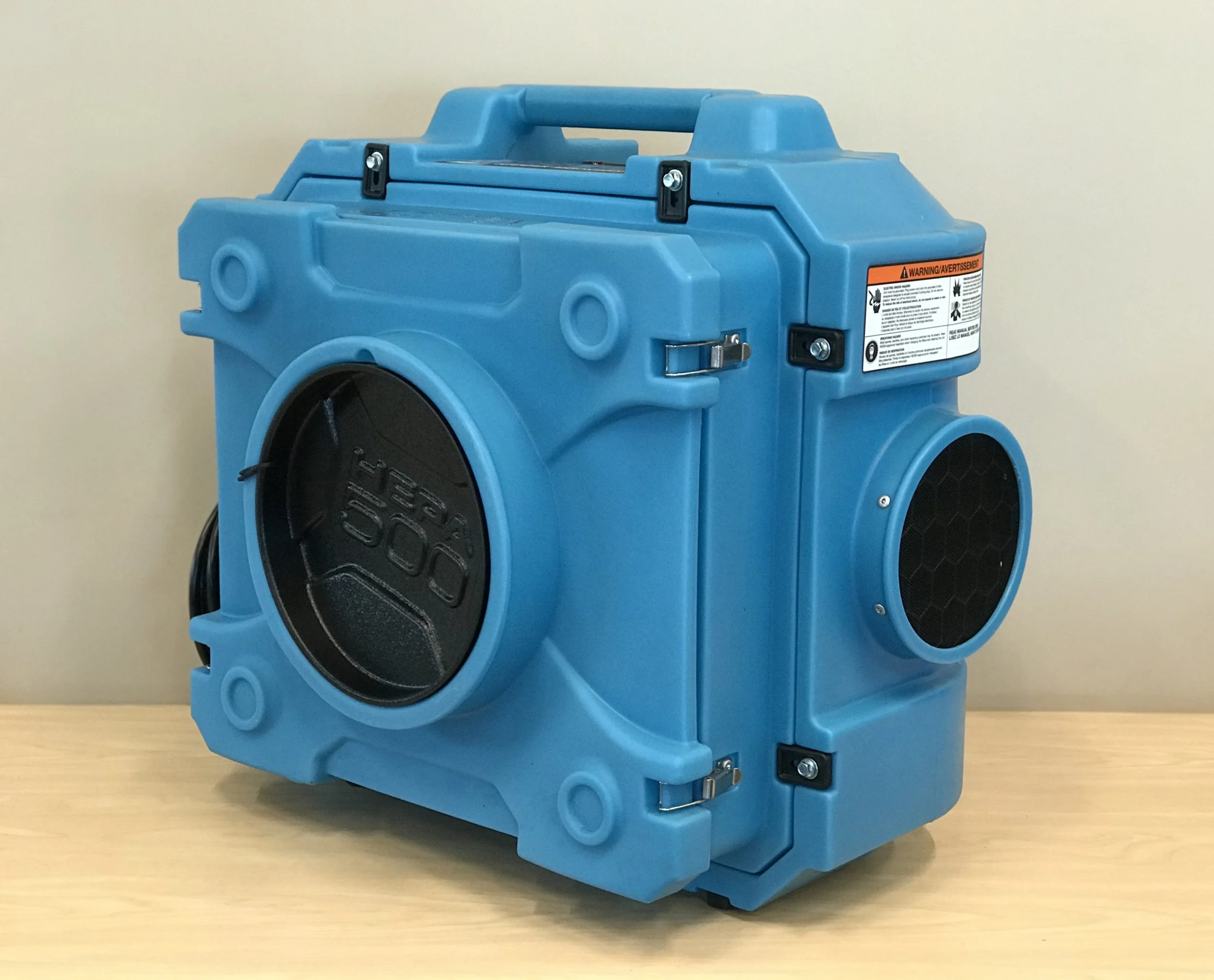Understanding HEPA Air Scrubbers and Troubleshooting Dehumidifiers
RH Business Marketing Solutions
Maintaining good air quality and appropriate humidity levels in your home or workspace is crucial for health and comfort. Devices like HEPA air scrubbers and dehumidifiers play significant roles in achieving this. However, understanding how these devices work and troubleshooting common issues can ensure they function effectively. This article explores the functions of HEPA air scrubber and offers guidance on addressing a common dehumidifier problem: when it runs but doesn't collect water.
What is a HEPA Air Scrubber?
Function and Benefits
HEPA air scrubbers are advanced air filtration systems designed to remove contaminants from the air. They are equipped with HEPA (High-Efficiency Particulate Air) filters that can capture particles as small as 0.3 microns with 99.97% efficiency. These devices are essential in environments where air quality is critical, such as construction sites, medical facilities, and homes with allergy sufferers.
Key Benefits of HEPA Air Scrubbers:
Improved Air Quality: HEPA filters effectively remove dust, mold spores, pollen, and other airborne particles.
Health Protection: By eliminating harmful particles, these devices help reduce respiratory issues and allergies.
Odor Removal: Air scrubbers can also reduce or eliminate unpleasant odors caused by smoke, pets, or chemicals.
How HEPA Air Scrubbers Work
HEPA air scrubbers draw in contaminated air and pass it through a series of filters. The pre-filter captures larger particles, while the HEPA filter traps smaller, more harmful particles. Some models also include activated carbon filters to remove odors and chemical fumes.
Applications
Construction Sites: To manage dust and airborne contaminants during renovation or building projects.
Medical Facilities: To ensure a sterile environment by removing airborne bacteria and viruses.
Homes: Particularly beneficial in homes with pets, smokers, or individuals with allergies or asthma.
For a selection of high-quality HEPA air scrubbers, visit Abestorm Air Scrubbers.
Troubleshooting Dehumidifiers: When It Runs But Doesn't Collect Water
Dehumidifiers are essential for maintaining optimal humidity levels, preventing mold growth, and improving air quality. However, it can be frustrating when your dehumidifier runs but not collecting water. Here are some common causes and solutions:
1. Incorrect Humidity Setting
Cause:
If the humidity level is set too high, the dehumidifier may not activate the water collection process.
Solution:
Check and adjust the humidity setting to a lower level (typically 30-50% relative humidity) to see if the unit begins to collect water.
2. Dirty Air Filter
Cause:
A clogged or dirty air filter can restrict airflow, preventing the dehumidifier from working efficiently.
Solution:
Regularly clean or replace the air filter as per the manufacturer’s instructions. This ensures optimal airflow and performance.
3. Blocked or Frozen Coils
Cause:
If the dehumidifier's coils are blocked with dirt or have frozen over, it can impede the device's ability to extract moisture.
Solution:
Blocked Coils: Clean the coils gently with a soft brush or vacuum.
Frozen Coils: Turn off the dehumidifier and let the coils thaw. Ensure the room temperature is above 65°F (18°C) to prevent freezing.
4. Malfunctioning Humidistat
Cause:
The humidistat measures the air's humidity and signals the dehumidifier to start collecting water. If it's faulty, the device won't operate correctly.
Solution:
Test the humidistat by setting it to a very low humidity level. If the dehumidifier doesn’t activate, consider replacing the humidistat.
5. Full or Improperly Positioned Water Bucket
Cause:
The dehumidifier will stop collecting water if the water bucket is full or not positioned correctly.
Solution:
Empty the water bucket if it's full.
Ensure the bucket is properly seated in its place. Some models have sensors that prevent operation if the bucket is not aligned correctly.
6. Faulty Compressor
Cause:
The compressor is crucial for the dehumidifier’s operation. If it’s faulty, the device may run but won’t collect water.
Solution:
If you suspect a compressor issue, it’s best to consult a professional technician. This component is complex and often requires expert handling.
7. Refrigerant Leak
Cause:
A leak in the refrigerant line can prevent the dehumidifier from cooling the coils, thus hindering water collection.
Solution:
Inspect the unit for signs of refrigerant leakage, such as oil stains or a chemical smell. If a leak is suspected, contact a professional for repair.
For more detailed troubleshooting steps and insights, visit Abestorm's blog on dehumidifiers.
Conclusion
Both HEPA air scrubbers and dehumidifiers are vital tools for maintaining a healthy indoor environment. HEPA air scrubbers effectively remove airborne particles, improving air quality and protecting health. Meanwhile, dehumidifiers control humidity levels, preventing mold growth and enhancing comfort. Understanding how these devices work and knowing how to troubleshoot common issues ensures they operate efficiently, providing the maximum benefits for your home or workspace. Whether you need to improve air quality or manage humidity, investing in and maintaining these devices is a step towards a healthier living environment.
